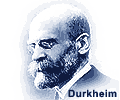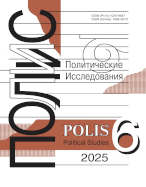The State as Manufacturer of Policy
Solovyov A.I.,
Dr. Sci. (Pol. Sci.), Prof., Head of Political Analysis Department, Faculty of Public Administration, Lomonosov Moscow State University, Moscow, Russia, solovyev@spa.msu.ru
elibrary_id: 75920 |
DOI: 10.17976/jpps/2016.02.08
Solovyov A.I. The State as Manufacturer of Policy. – Polis. Political Studies. 2016. No. 2. https://doi.org/10.17976/jpps/2016.02.08
The modern concept of state is closely linked with explanation of most forms of human activity and is constantly drifting away from the one coined by Aristotle and other classicists. The coexistence of numerous theoretical images of the state confirms the fact that none of such general concepts offer a profound explanation of all of its features and conditions. However, in most cases these multifaceted concepts are directly or indirectly related to different forms of political power, which is the semantic core of various theoretical schemes and terms. The role-based explanation of asymmetrical trends in the state development shows that administrative statuses and norms of the state hierarchy can qualitatively change their profile in activity of specific carriers of these functions (which have their own motives and interests) and thereby induce government bodies to opt for implementation of different goals. In this regard, the state as a role structure forms the flows of activity which reflect changes in the motives and normative values of actors, and thereby confirms the ability of institutions and structures to perform functional reconfiguration and make amendments to the schemes of business communications, so that the state would address various social interests. On the one hand, the author states that, in the framework of the real role interaction, even the state apparatus is not the center of the state general civil identification; this indicates that the state, due to motivational and functional diversity and the constant challenge of all-civil reference points of government institutions, makes the semantic content of the public authority more mobile and ensures a wide range of its application (starting from the agents of the personal-trustee power to all-civil institutions). Therefore, the state has to constantly spend resources and energy to find its inner balance. On the other hand, this means that the state, pierced with competitive interactions of various centers of influence, contains a sort of “institutional void”, which can turn into a “hollow” structure, indicating the inability of the official centers of power to maintain the priority of universally accepted rules and norms of public policy, to legitimize their goals and implement the corresponding plans, even by force. Therefore, the state can be described as a certain condition of its status and non-status structures which demonstrates the all-civil direction of their activity (expressed in a certain level of legitimacy of authorities, the corresponding character of distribution of resources, guarantees of peoples’ civil rights, accountability of institutions etc.). In other words, the state is basically a configuration of power institutions, management networks and other internal agents, whose combined activity (in the social space controlled by them) provides for actual (rather than rhetorical or symbolic) satisfaction of citizens’ needs in the material and spiritual resources (thus, excluding the priority of particularistic and group needs of the ruling class). In this regard, the state has a unique political form, describing him as an actor with a special set of tools and methods for implementation of power and governing the society. The author underlines that the state is only a special case of interaction between the authority and the society on the controlled territory. In fact, the term “state” is only a brand used by the ruling elite to confirm its legitimacy and to justify its policy. The consensual nature of politics, manifested in negotiation forms of democracy and the use of incongruent methods of regulation (which reflect the asymmetrical approach of the authorities to the participants of the conflict) is used by the state to solve problems and conflicts hidden in the communicative potential of the authorities and society. With the expansion of congruent methods (including the promotion of propaganda technology, advertising, PR, rhetoric, imposition of identity etc.) and improvement of their application along with legal, administrative and other means of regulation of social relations, the overall functionality and quality of the state as a subject of power and control has substantially improved.
See also:
Bereznyakov D.V., Kozlov S.V.,
Symbolic Politics in Post-Soviet Ukraine: Construction of the Legitimizing Narrative. – Polis. Political Studies. 2015. No4
Zubov A.B.,
Christians and Politics: Persecuting Church and Persecuted Church. Why Will All Who Seek Living in Christ, Will Be Persecuted?. – Polis. Political Studies. 2008. No2
Tartzan V.N.,
The state youth policy in contemporary Russia. – Polis. Political Studies. 2010. No3
Konkov A.E., Chukov R.S.,
Parliamentary Diplomacy: Developing Relations Between Society and State at the Mega-Political Level. – Polis. Political Studies. 2020. No1
Malinova O.Yu.,
Symbolic politics and the constructing of macro-political identity in post-soviet Russia. – Polis. Political Studies. 2010. No2




.jpg)






 print
print
.jpg)
.jpg)